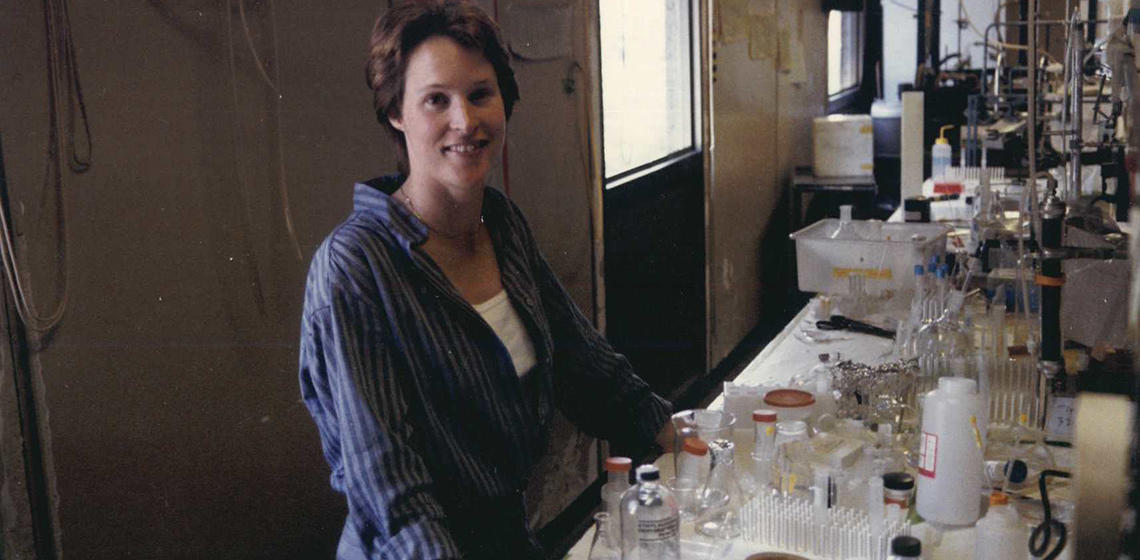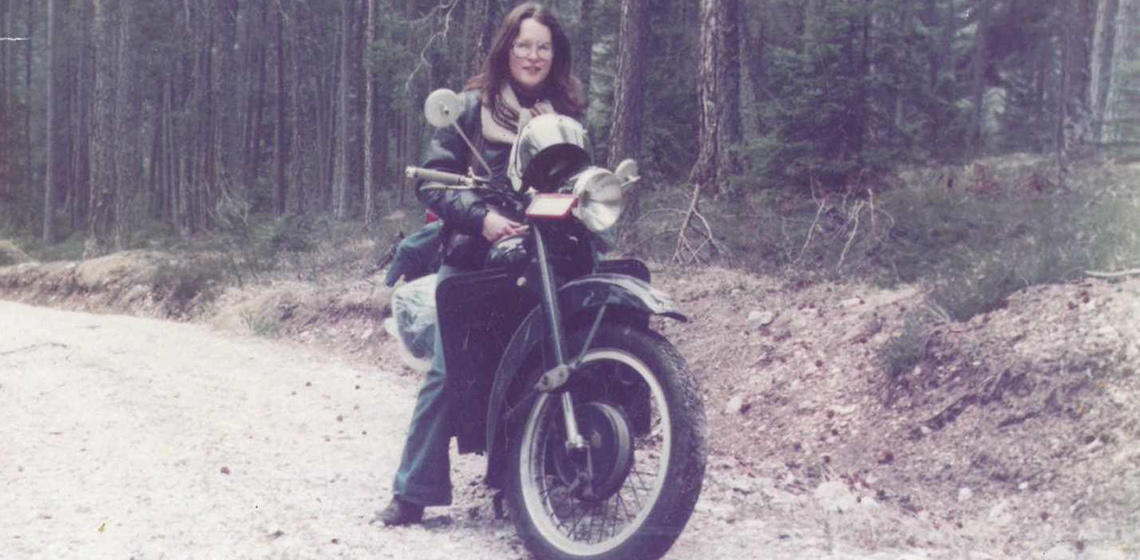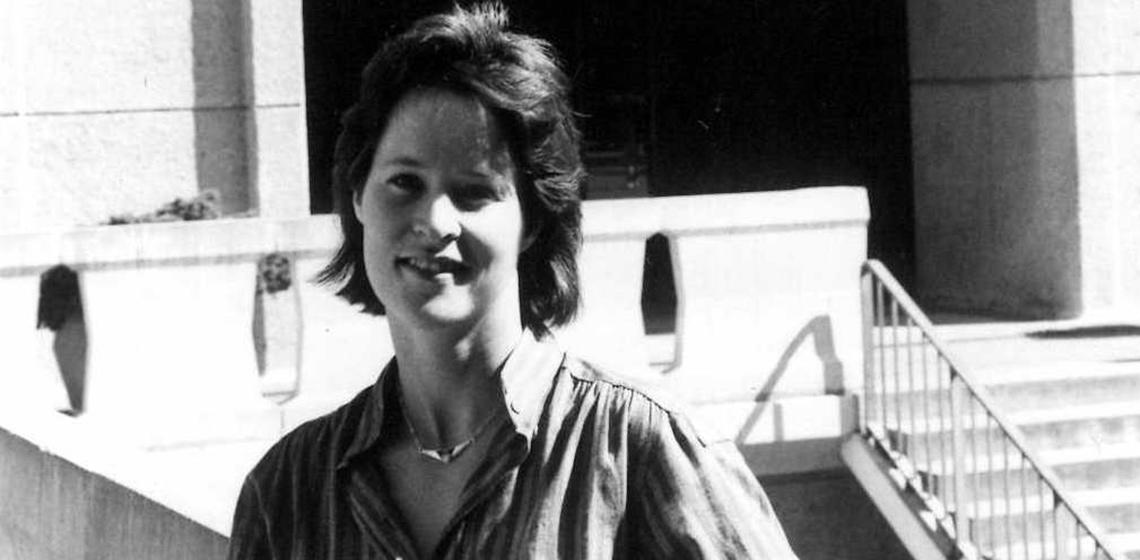In the early 1980s, the lab of College biomolecular engineer Harvey Blanch brought together an adventurous group of young researchers and launched them on long and successful careers. One of them, Caltech professor Frances Arnold, has won the 2018 Nobel Prize in Chemistry for her discoveries in the directed evolution of enzymes. Arnold is the fifth woman to win the Nobel Prize in Chemistry since it was first awarded in 1901.
Arnold received her chemical engineering Ph.D. in 1985 at UC Berkeley. She went on to postdoctoral research with Nacho Tinoco for one year and then six months at Caltech, starting her academic career there in 1987. While at Caltech, she has developed techniques for the directed evolution of enzymes, the achievement that won her the Nobel. But the groundwork for her later success was nurtured in the early heady days of genetic engineering here at the College of Chemistry in the lab of Harvey Blanch.
At the time, along with a handful of academic biochemical engineers at Caltech, MIT, Cornell, and Purdue, Blanch was exploring the possibilities of recombinant DNA technology. He developed bioreactor techniques for growing hybridomas, genetically engineered mammalian cells that produced monoclonal antibodies, which are now the basis for several important drugs that target human cancer cells.

Photo: Frances Arnold, 1980s; courtesy Harvey Blanch.
Says Blanch, “It was obvious that recombinant DNA had tremendous potential. As a result, my lab attracted a terrific group of really sharp students, who have all gone on to have successful careers in academia and industry. One of those students with exceptional drive and ability was Frances Arnold, who arrived in the winter of 1981.” Once in Blanch’s lab, Arnold got to work on affinity chromatography, a new separations process that could recover biochemicals from extremely dilute solutions.
Jeff Reimer, Professor and Chair of Chemical and Biomolecular Engineering, recalls when he first met Arnold. “Frances took her qualifying exam on October 7, 1982. I had just celebrated my 28th birthday. I showed up at UC Berkeley on Labor Day weekend that year, and Frances’ exam was the first one of my career (other than my own.) I had not met her prior to the exam, nor knew anything about her, or her work. I am not sure, but I think I was placed on her committee because someone was sick. I do recall it was pretty last minute.”
He continues, “Before her exam started one of the committee members said something to the effect that this was going to be the easiest exam, ever. As most junior professors would, I took offense at this notion and grilled Frances on just about every sentence she spoke. And she was brilliant.”
In 1982 Arnold mentored two undergraduate students, Matt Croughan (B.S. ’83) and Jeff Chalmers (B.S. ’83), who joined the lab to conduct honors research with her. They learned to grow cell cultures with the help of a senior graduate student, William Miller (Ph.D. ‘87, ChemE), who had come to do his Ph.D. after eight years’ industry experience. At the time, he was perfecting the environment inside bioreactors to keep mammalian cell lines flourishing. These cells were far more difficult to grow than the simpler yeast and bacterial cells that produced earlier generations of biochemicals, from ethanol to antibiotics.

Jeff Chalmers (l) and Matt Croughan when they were students; courtesy Chalmers and Croughan.
Chalmers and Croughan were co-authors with Arnold on a seminal 1985 paper on the rational approach to the scale-up of affinity chromatography. Affinity chromatography was a new concept at the time. Croughan relied on what he learned in ChemE 162 (Process Dynamics and Control) taught by Professor of Chemical Engineering Alan Foss to guide him in the research.

Photo: Linda Griffith (left) and William Miller standing, Michael Prince seated, at a BBQ, 1980s; courtesy Harvey Blanch
In 1982 this tight-knit group was joined by another ChemE graduate student, Linda Griffith, who wrote her 1988 Ph.D. thesis on hollow fiber bioreactors. Says Griffith, “My lab desk was right next to Frances. She had incredibly high standards, and all the best undergrads wanted to work with her. She was very good at motivating people, tough but generous. She threw fabulous dinner parties—I’ll never forget the braised apricots. Frances loved talking with and learning from other people.”
Doug Clark, G.N. Lewis Professor and dean of the College, remembers meeting Arnold for the first time. Clark says, “I was attending an AIChE meeting in Chicago in 1985. I was still at Cornell, and Harvey Blanch was trying to recruit me to come to Berkeley. He suggested I meet Frances. She impressed me right away. And although hindsight is 20/20, I like to think I could see greatness in her then.”
He continues, “I was incredibly impressed with her 1993 paper on engineering enzymes that introduced the world to her techniques for directed evolution. At the time, many scientists were struggling to use rational design techniques to create new enzymes and other proteins. Frances told them they didn’t need to understand the exact structure of the enzyme target, they could just let evolution design it for them. Her solution was both simple and elegant. I said to myself, ‘Why didn’t I think of that?’”
The techniques Arnold launched are used widely today in industry, from making the enzymes used in laundry detergents to biofuels and pharmaceuticals. Directed evolution can replace hazardous chemicals and expensive catalysts with green chemistry approaches that use enzymes in mild conditions.
Arnold has remained at Caltech since she joined the faculty there in 1987. She became a full professor in 1996, three years after her ground breaking paper. The accolades began flowing soon after. In 2000, she was elected to the National Academy of Engineering, becoming one-half of the only father-daughter pair in the Academy with her father, nuclear engineer William Howard Arnold Jr.
She was elected to the National Academy of Medicine in 2004 and the National Academy of Sciences in 2008, making her the first woman to be elected to all three of the National Academies. She is also the first woman to receive the Charles Stark Draper Prize from the NAE, in 2011.
She currently holds 61 US patents and has cofounded three companies: Gevo, which is utilizing yeasts to make isobutanol as a replacement for ethanol in fuel production; Provivi, focused on rethinking pest control by using natural pheromones for more sustainable food production, and a new startup Aralez Bio using engineered enzymes to make sustainable products.
And on Dec. 10, 2018, the anniversary of Alfred Nobel’s death, Frances Arnold was handed her Nobel medal by King Carl XVI Gustaf of Sweden. She continues to inspire new generations of students at Caltech as the Linus Pauling Professor of Chemical Engineering, Bioengineering and Biochemistry.

Photo: Frances Arnold receives the Nobel Prize from King Carl XVI Gustaf of Sweden. Photo: © Nobel Media AB 2018; photo: Alexander Mahmoud.




